Now Reading: Embracing AI with Microsoft Copilot
-
01
Embracing AI with Microsoft Copilot
- Home
- Dynamics 365
- Dyn365CE
- Embracing AI with Microsoft Copilot
Embracing AI with Microsoft Copilot
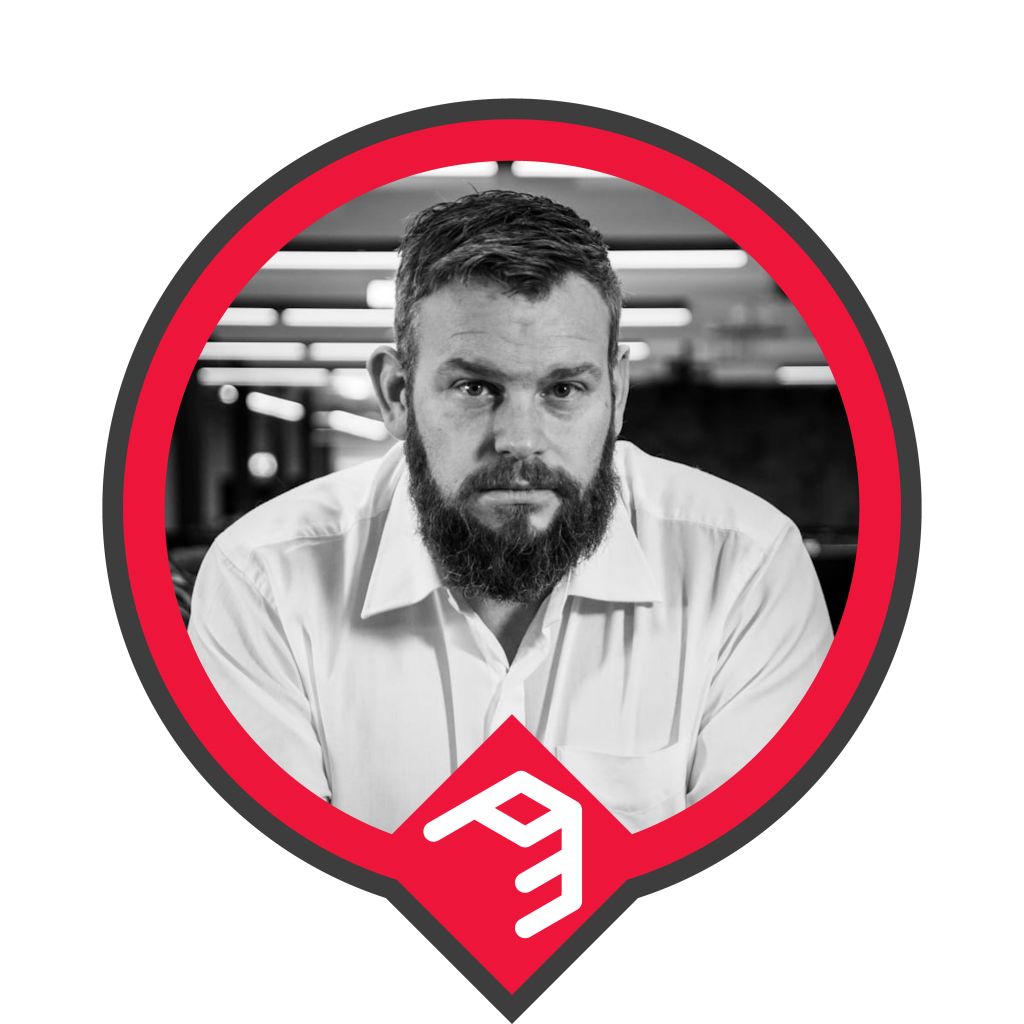 Mark ChristieDyn365CE8 months ago2.8K Views
Mark ChristieDyn365CE8 months ago2.8K Views
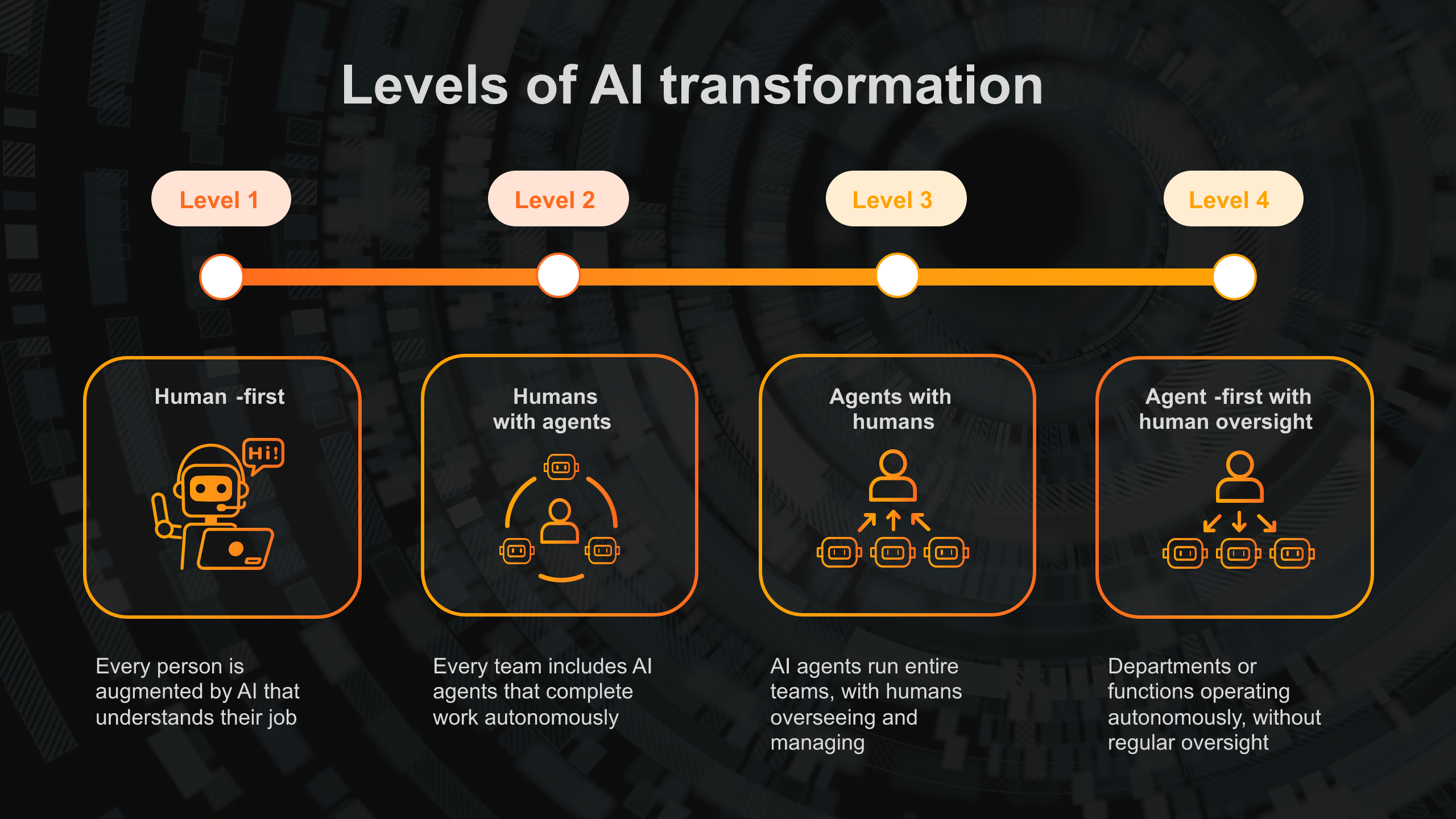
Understanding the 4 Levels of AI Transformation
So, you’ve heard all the noise about Microsoft Copilot, and you’re wondering what the fuss is. Is it just Clippy on steroids? Or is it actually useful for something beyond writing “Happy Monday, hope you’re well” emails? Let’s have a wee look.
What Is Microsoft Copilot Anyway?
Microsoft Copilot is your AI-powered assistant that lives inside the Microsoft 365 apps you already use — Word, Excel, Teams, Outlook, PowerPoint, the whole gang. It’s not a standalone app; it’s embedded intelligence. You type, it suggests. You speak, it listens. You try to avoid writing that 17-slide strategy deck, it builds the skeleton for you while you sip your Irn-Bru.
You can find the official Microsoft overview here, and if you haven’t read it, now’s a good time — especially before you convince your boss to shell out for Copilot licenses because you’re “revolutionising workflow.”
There’s No One-Size-Fits-All AI
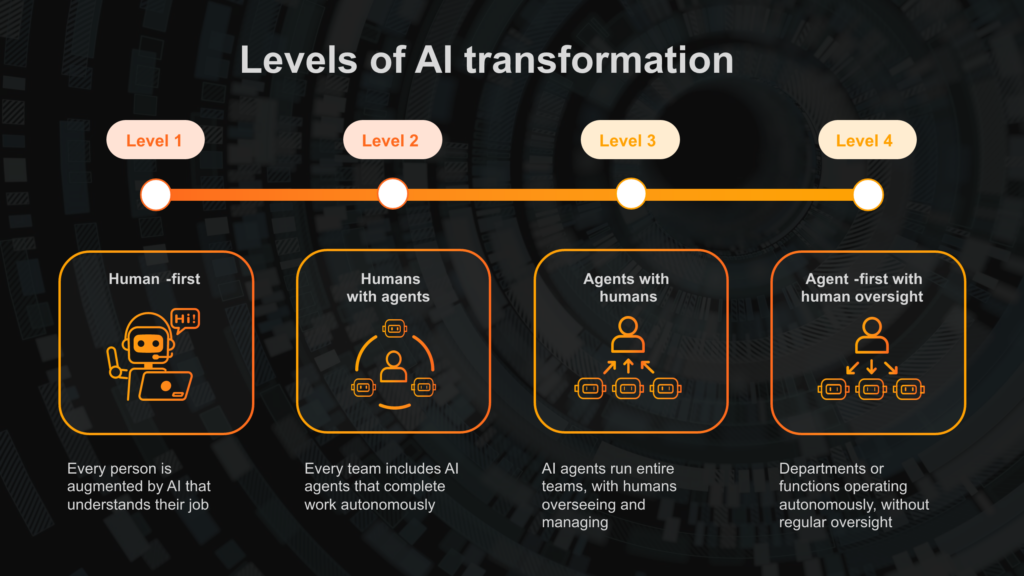
Let’s also address the ice elephant in the room: job fears. Plenty of folk hear ‘AI’ and immediately worry their role is on the chopping block. The truth is, for most people, AI isn’t about taking your job — it’s about making your job easier. It can take over the boring, repetitive parts (like chasing invoices or digging through files) so you can focus on the stuff that actually needs a human touch — creativity, relationship building, problem solving, and, aye, sometimes dealing with pure chaos.
We need to stop thinking of Copilot as the replacement and start thinking of it as the sidekick — a very clever, annoyingly efficient sidekick, but still one that needs a human to point it in the right direction.
Before we dive in, let’s be clear: not every business needs to be steamrolling toward full AI automation. You don’t need to leap from Level 1 to Level 4 overnight. In fact, some teams might never want or need to go beyond Level 2 — and that’s totally fine. It’s not about chasing a trend. It’s about what actually works for your team, your workflow, and your goals.
Whether you’re running a local hockey club or a multinational supply chain, Copilot has a place — and that place depends entirely on how comfortable you are with handing over the reins (or keeping them firmly in hand).
So let’s get to the meat of it: the 4 levels of AI transformation. These levels show how deeply AI is woven into your business, from a simple assistant to full-on autonomy. And to keep things fun, we’ll use the Perth Panthers Hockey Club as our example.
Level 1: Human-first – "I've got the AI, but I'm still in charge, aye?"
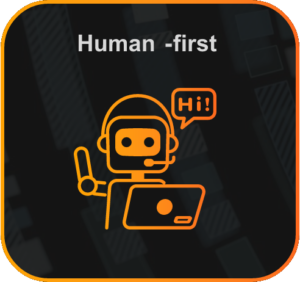
This is the most basic level of AI transformation, where AI is used as a tool by individuals to enhance productivity. The person is making all the decisions and driving the workflow — the AI just helps make things easier or faster. Think of this as the AI version of having a calculator: you’re still doing the thinking, it just speeds up the maths.
You’re probably using Copilot in Word to summarise a long report or in Excel to do a bit of forecasting without wanting to scream at formulas. There’s zero automation here beyond basic prompts — it’s just about helping individuals perform better.”I’ve got the AI, but I’m still in charge, aye?”
At this level, the human is firmly in control. AI is just a handy helper. Think of Fiona, who manages bookings and admin for the Panthers.
She’s using Copilot to check if there are any unpaid or outstanding bookings. She fires up Excel or Dataverse, types in a natural language query, and Copilot pulls the data for her. No faffing about with filters or pivot tables.
Copilot helps Fiona do her job faster, but it doesn’t make decisions. She’s still the boss.
Business takeaway: AI supports individuals to be more productive but plays no role in workflows or team dynamics.
Level 2: Humans with Agents – "It’s on Teams, so it must be true."
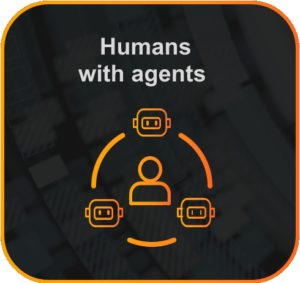
At Level 2, AI goes from being a solo act to a band member. It’s embedded within teams, completing bits of work autonomously. People still lead the thinking and strategy, but AI is actively helping each member do their job more efficiently — and often without being asked every time.
These AI agents can summarise conversations, collate documents, flag issues, and provide proactive nudges, especially across tools like Microsoft Teams and Outlook. It’s collaborative — AI is no longer just in the background, it’s at the desk next to you (figuratively, of course).”It’s on Teams, so it must be true.”
Now AI is embedded across the team. It’s not just Fiona anymore — the whole operations team has access to Copilot, and it’s doing bits of work for them.
Jimmy, the facilities lead, gets a Copilot-generated summary in Teams: a list of all the ice plant units needing replaced. This isn’t magic — it’s AI cross-referencing maintenance logs, asset ages, and recent incident reports.
Nobody had to manually build a report. The AI agent did it in the background and surfaced it in a human-friendly way.
Business takeaway: AI is actively completing tasks within teams. People and AI are collaborating, but decisions are still human-led.
Level 3: Agents with Humans – "Let me know if anything catches fire. Otherwise, crack on."
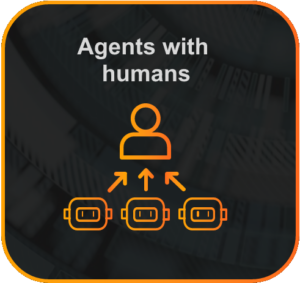
At Level 2, AI goes from being a solo act to a band member. It’s embedded within teams, completing bits of work autonomously. People still lead the thinking and strategy, but AI is actively helping each member do their job more efficiently — and often without being asked every time.
These AI agents can summarise conversations, collate documents, flag issues, and provide proactive nudges, especially across tools like Microsoft Teams and Outlook. It’s collaborative — AI is no longer just in the background, it’s at the desk next to you (figuratively, of course).”It’s on Teams, so it must be true.”
Now AI is embedded across the team. It’s not just Fiona anymore — the whole operations team has access to Copilot, and it’s doing bits of work for them.
Jimmy, the facilities lead, gets a Copilot-generated summary in Teams: a list of all the ice plant units needing replaced. This isn’t magic — it’s AI cross-referencing maintenance logs, asset ages, and recent incident reports.
Nobody had to manually build a report. The AI agent did it in the background and surfaced it in a human-friendly way.
Business takeaway: AI is actively completing tasks within teams. People and AI are collaborating, but decisions are still human-led.
Level 4: Agent-first with Human Oversight – "Booking sorted. Receipt emailed. Pint, anyone?"
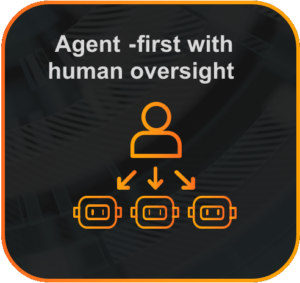
At this level, AI becomes the operating model. Departments or functions are fully automated, and AI manages everything — with humans taking a back seat, only stepping in when something goes wrong. This is where AI delivers services or runs operations from start to finish, with minimal (or no) direct human input.
AI handles bookings, finance workflows, staff notifications, customer emails — all on its own. You’ve trained it, audited it, and now you just check on it from time to time. It’s the holy grail for efficiency — but not something every team will be ready for. And that’s alright.”Booking sorted. Receipt emailed. Pint, anyone?”
This is full-on automation with minimal human intervention. The Perth Panthers have an AI-managed booking system.
Someone visits the website, picks a date, and books the rink. Copilot checks availability, handles payment, sends confirmation, and even schedules an automatic follow-up survey. Humans only get involved if something breaks or a dog show clashes with hockey practice.
The system runs itself. People just make sure it stays on track.
Business takeaway: Departments or entire business functions operate independently, with AI taking initiative and humans acting as strategic overseers.
Wrapping It All Up
Microsoft Copilot isn’t just about jazzy productivity. It’s about levelling up how you actually operate your business — at your own pace.
These four levels — from helpful assistant to autonomous agent — show how you can grow with AI. Whether you’re like Fiona at Level 1 or you’ve built a fully automated rink booking system at Level 4, there’s always a next step.
And here’s the most important part: there’s no right level. Just the one that fits your team best right now. Progression is great, but practicality wins every time.
Just remember: if the AI starts choosing the Panthers’ starting line-up, it might be time to pull the plug.
![]()
For more info, read the official Microsoft docs again: https://learn.microsoft.com/en-us/copilot/microsoft-365/microsoft-365-copilot-overview
Related Posts
Dyn365CE17 hours ago
generative art ai 1
Dyn365CEYesterday
anabolizantes online 7










